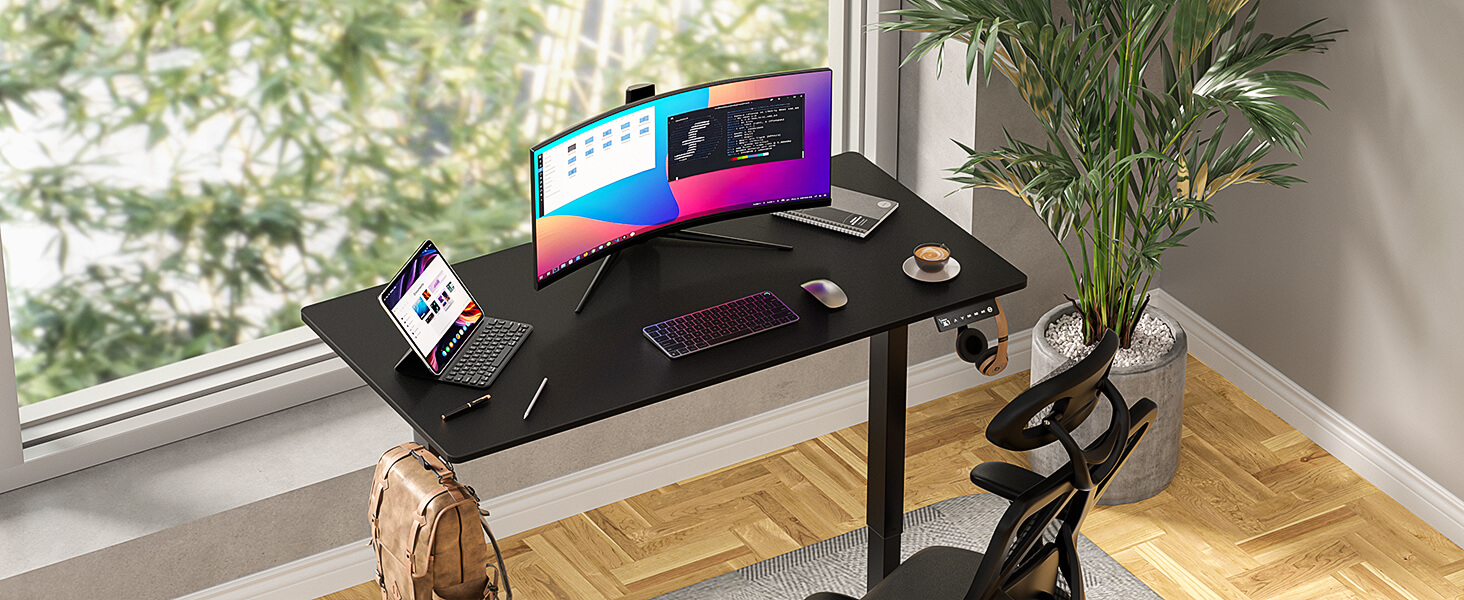The way we work is changing. Remote work and flexible hours are becoming more common. Alongside this shift, Sit to Stand Desks have gained popularity. These desks offer not only physical benefits but also improve mental well-being and morale.
In this article, we explore how using a Sit to Stand Desk can help reduce stress, boost motivation, and create a positive work environment.
The Effects of Sitting on Mental Health
Sitting for long periods is a growing concern. While sitting itself isn’t harmful, the problem arises when people stay seated for hours without moving. Research links prolonged sitting to higher stress and anxiety levels.
One study shows that people who sit for long hours report feeling more stressed and less productive. Sitting for extended periods can also cause physical discomfort, such as back pain or fatigue. This discomfort affects mental health, leading to a decrease in motivation and focus.
Sitting also raises cortisol, the body’s primary stress hormone. Over time, high cortisol levels can lead to burnout, depression, and chronic stress. These effects are not just physical—they affect your mind, too.

How a Sit to Stand Desk Helps Mental Well-being
Switching to a Sit to Stand Desk can reduce these negative effects. Here’s how:
1. Reducing Stress and Anxiety
One of the biggest benefits of a Sit to Stand Desk is that it encourages movement. Alternating between sitting and standing keeps your body engaged, which reduces physical discomfort. This comfort can lower stress levels, making you feel more relaxed.
Standing also improves blood circulation, which helps reduce fatigue. When you stand, your body becomes more active, which can refresh your mind and lower feelings of stress. Standing helps break up long periods of sitting, keeping your workday varied and dynamic.
2. Improving Focus and Productivity
Standing promotes better blood flow, which can boost mental clarity. When you stand, your body becomes more alert, which helps you focus better on tasks. This boost in alertness improves cognitive performance and can help you stay more productive throughout the day.
The ability to alternate between sitting and standing prevents burnout, allowing you to stay motivated and focused. A change in posture can refresh your mind, helping you maintain energy and enthusiasm for your tasks.
3. Improving Mood
Standing has been shown to have a positive impact on mood. It can make you feel more in control and confident. Whether you’re giving a presentation or working at your desk, standing can improve your sense of empowerment.
Moreover, standing encourages movement. Even short breaks for stretching or walking can trigger the release of endorphins, the body’s natural “feel-good” hormones. These endorphins improve mood and contribute to a more positive outlook on the day.
4. Increasing Engagement and Motivation
Standing helps you engage more with your work. It keeps you alert and involved in what you’re doing. When you stand, you are less likely to feel bored or distracted. This increased engagement can help you stay on task and avoid procrastination.
The ability to move around and change positions also helps prevent mental fatigue. A Sit to Stand Desk allows you to stay physically comfortable and mentally refreshed, keeping you motivated throughout the workday.
5. Encouraging Social Interaction
Standing desks can also encourage better communication and collaboration. When people are seated, they may feel less likely to engage with others. But standing creates a more open posture, making it easier to interact with colleagues.
In teams, standing can encourage dynamic discussions and collaboration. This sense of connection boosts morale, as employees feel more engaged in their work and their team.
Autonomy and Mental Well-being
Having control over your workspace can significantly improve your mood. A Sit to Stand Desk allows you to adjust your position as needed, giving you the flexibility to sit or stand whenever you choose. This autonomy fosters a sense of control, which is essential for mental well-being.
Studies show that people who feel in control of their environment are less stressed and more satisfied with their work. The ability to decide when to sit or stand increases your sense of comfort and mental clarity.
Conclusion
A Sit to Stand Desk offers more than just physical benefits—it can also improve mental well-being. By encouraging movement, reducing stress, boosting productivity, and enhancing mood, a Sit to Stand Desk can help create a positive and healthy work environment.
Switching to a Sit to Stand Desk is a simple but effective way to improve mental health at work. If you want to boost your morale, reduce stress, and stay more focused throughout the day, consider making the change. Your mind and body will thank you.
